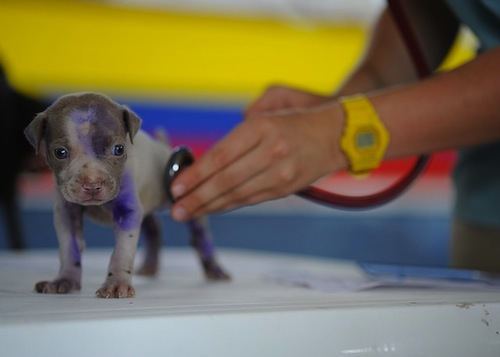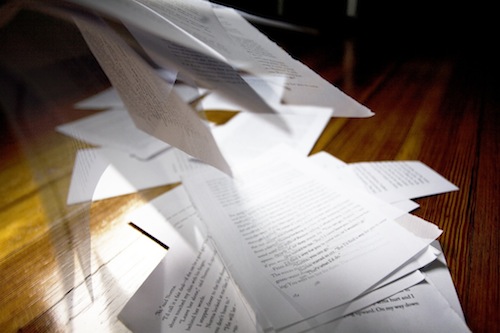
Image Source: Worship The Brand
In many ways, being a grants administrator is a lot like being a doctor…on second thought, maybe it’s more like being a veterinarian. My sister-in-law is a vet, and no matter where she goes, she is often pulled into very technical conversations about ailing pets and livestock. The folks who stop her are usually searching for a DIY cure (free) or quick and easy diagnosis (impossible) – all while the woman is trying to buy groceries or pump gas.

Image Source: pixabay.com
Ok, so maybe I am oversimplifying things a little, but I assure you, there are times when I encounter folks who just want me to tell them what it takes to find and be awarded a grant. There needs to be some deeper examination first before writing that prescription!
Writing a grant takes a lot of work and requires planning and the ability to tell a story in a clear, concise manner. Your grant proposal has to be innovative, compelling, and accurate. When I read applications, I want to gain a sense of that person’s artistic philosophy, understand his or her trajectory and feel that person’s passion!
Ultimately, this post is intended to provide some insight into the grant review process, so here goes:
When I read grants, I sort applications into three piles: an “A” pile, a “B” pile, and a “C” pile. My “A” pile includes applications that are easy to understand and clearly aligned with the purpose of the grant program. They are well organized, include all required attachments, and offer a creative/innovative approach to what may be a traditional art project.
The “B” pile is my maybes. It includes applications that have caused questions to creep into my already foggy mind (you never know how many applications a reviewer has to read, so make it easy on them and stick to the facts). These applications may be difficult to follow but still have redeeming qualities.

Image Source: catholic-skyview-tremblay.blogspot.com
The “C” pile, on the other hand, is usually fraught with gaffs and errors and/or may be missing content/ required support material. If your grant proposal is in that stack, chances are your application will not be looked at any further.
After this initial sorting process, I usually let the applications “sit” for a day or two, then I read and re-sort (starting this time with the “B” pile) before assigning scores, and then, I read the applications again to make sure that my scores are “solid” and that I haven’t missed anything. (I used quotations around solid because many grant panels include a Q&A session and panelists are allowed to discuss, ask questions and change scores.)
In addition to insight, I also feel obligated to also offer the following advice:
1.Understand the purpose of the grant and the mission of the funder– Do your research! Why is the funder “giving money away”? What are they hoping to accomplish by way of your project? What types of projects/applicants have they awarded in the past?
Some funders will post lists on their website, while others will speak to you on the phone/via email/in person! Take advantage of the opportunities to learn more about the funder in order to make sure that your grant idea is a good match. Life is short, so please don’t waste the reviewer’s or your time by applying for opportunities that aren’t a match.
2. Be able to articulate your project – Articulating something that you’re passionate about can often be a challenging experience. You know your project from the inside out, but can you explain it to someone else who may not be familiar with you, your work, or even your particular artistic discipline? Often times review panels are comprised of a number of individuals from diverse backgrounds (arts, culture, business, community interest, law, finance, social services, etc.), so it’s critical that you are able to explain your project in a way that that anyone can understand.
3. Connect — Readers like to connect with applicants and their projects. Helping others is at the heart of philanthropy, and by extension, connecting applicants to funds is one way of helping. One way to show a connection between your project and the funding available is to speak to your goals and articulate how funding will get you closer to them.
4. Illustrate that you “can deliver”— Three words: STRONG SUPPORT MATERIALS. Applicants often take their support materials for granted; I believe that this is because they see them as an additional burden rather than an essential component in creating/extending the artist’s narrative for the reviewer. The support material tells the people responsible for awarding the grant where you’ve been, how successful you’ve been, and how likely it is that you’ll successfully implement the project as outlined in your application.

Image Source: Flickr
5. Edit, and then, proofread – As with any other form of writing, editing (revising and expanding/contracting the narrative) and proofreading (checking for spelling, punctuation, and grammatical errors) are they essential components in the final stage. Sadly, too many good applications are called into question because of avoidable errors.
I often advise applicants to pad their grant writing schedule so that they can walk away from their first draft for a day or two before editing their work. I also always recommend that they have someone else (preferably someone who knows nothing about the project) review their proposal.
I’m sure you’ve all heard the saying “Nothing ventured, nothing gained” – this is especially applicable to grant applications. Now that you’ve gotten a chance to stick your big toe in the water of grant writing, it’s time to work up your courage, dive in, and see where it takes you.